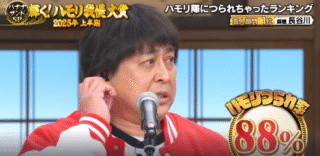Hello, World!
Recently, the city of Toyama, where I live, was introduced to the world by The New York Times.
As a Toyama citizen, I can’t help but wonder, “Why Toyama?” But at last, Toyama has been discovered by The New York Times—and the world! 
Japan’s major cities and scenic areas, often referred to as “Little Kyotos,” are already bustling with tourists. Perhaps that’s why an untapped destination like Toyama was chosen.
Currently, the main attractions being highlighted are the Toyama Glass Art Museum and Owara Kaze no Bon.
Owara Kaze no Bon is a traditional festival held to pray for a bountiful harvest and to calm the wind gods, preventing typhoon damage. This festival features the Owara dance, a form of Bon Odori, and takes place for a limited time—from late August to September 3.
If you can visit Toyama during this period, I highly recommend seeing it! But each season—spring, summer, autumn, and winter—has its own unique charm. This is true for any city in Japan with four distinct seasons, but if you’re making the trip to Toyama, I also suggest visiting the Shūsui Museum of Art.
This museum houses a collection of Japanese swords.
Although Japanese swords are no longer used in modern times, just looking at them is enough to make you straighten your posture, sending a chill of awe through your body.
It’s a rare experience to see these masterpieces up close. Plus, the museum is not far from the Glass Art Museum, so be sure to stop by!
Toyama City: Shūsui Museum of Art
The name “Shūsui” (秋水) comes from a term that means “a finely sharpened Japanese sword.”
During the Muromachi period, Toyama Prefecture was home to skilled swordsmiths of the Uda School (宇多派), including:
• Norishige (則重), a swordsmith regarded as an elder disciple of the famous Masamune (正宗).
• Gō Yoshihiro (郷義弘), one of the legendary “Three Great Swordsmiths of Japan” (天下三作).
In the age of the samurai, a masterfully crafted sword was not something one could simply acquire—it required a bearer of equal stature.
Thus, a sword came to symbolize its owner, becoming the very soul of the warrior.
The second part of the exhibition, titled “Masterpieces of Japanese Swords: The Secrets of Beauty,” explores the aesthetics of legendary blades through three key elements:
• Hamon (刃文) – The tempering patterns, essential for maintaining sharpness.
• Jitetsu (地鉄) – The steel texture, reflecting the unique characteristics of different swordsmith schools and revealing the profound beauty of the metal.
• Sugata (姿) – The elegant curvature, tip shape, and overall form that define the sword’s beauty.
We invite you to admire the exquisite craftsmanship and artistry of these legendary swords.
(Referenced from the official website of the Shūsui Museum of Art.)
この記事を書いた人Wrote this article
umm2024 男性
管理人のUmMです。私は、これまでいくつかの転職を経験しており色んな仕事を経験してきました。中でも一番長く経験した仕事は営業職です。営業職を経験した中で、お客様の問題解決をするためにはどんな情報が必要か?を考えてきました。その中で気づいたのは、自分が気になっていることは他の誰かも気になっているという事です。見知らぬ誰かも気なっているかもしれないことの情報を得るための時短に繋がればと思っています。
